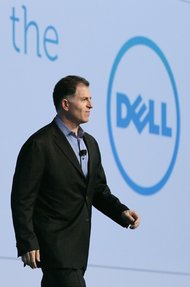“Since then,” Mr. Bernanke told his audience, “I’ve developed a view that central bankers should not try to determine fundamental values of assets.”
Indeed, Mr. Bernanke’s academic work, largely at Princeton, helped shape the conventional wisdom that central banks couldn’t spot asset bubbles and shouldn’t try to pop things that looked like bubbles. In his first speech as a Fed governor in 2002, he reiterated that trying to judge the sustainability of rapid increases in housing or stock prices was “neither desirable nor feasible.”
Over the next several years, he said repeatedly that he saw no clear evidence of a housing bubble. And in 2004, the Bernankes paid a hefty $839,000 for a town house on Capitol Hill in Washington.
It took a great recession to change his mind. The recession, prompted by the collapse of the housing bubble that Mr. Bernanke — and most other experts — failed to see coming, ended an era of minimalism in central banking. And there is no better marker than the views of Mr. Bernanke, the world’s most influential central banker, who now argues that the Fed needs to consider a range of previously unthinkable actions, including trying to pop bubbles when necessary, because sometimes the cost of doing nothing is worse.
Mr. Bernanke, who plans to step down in January after eight years as Fed chairman, will be remembered for helping to arrest the collapse of the financial system in 2008. This shy, methodical economist who had been expected to serve as the keeper of Alan Greenspan’s flame — to preserve the Fed’s hard-won success in moderating inflation — emerged under pressure as perhaps the most innovative and daring leader in the Fed’s history.
But what Mr. Bernanke did after the crisis may prove to have even more enduring influence. For almost three decades, the Fed focused on moderating inflation in the belief that this was the best and only way to help the economy. In the wake of the crisis, Mr. Bernanke forged a broader vision of the Fed’s responsibilities, starting experimental, incomplete campaigns to reduce unemployment and to prevent future crises.
The Bernanke Fed has failed to fully achieve its goals. Growth is still tepid, unemployment still too high, inflation still too low. Some critics continue to warn — so far, incorrectly — that its efforts will unleash inflation or destabilize financial markets.
Yet many of the Fed’s experiments are already being emulated by other central banks. And Mr. Bernanke’s many admirers say it is hard to imagine that anyone else could have done more under the circumstances to restore the economy. Fortunately, they say, his lifelong study of central banking under stress meant that he not only knew the available options but also understood that those options weren’t enough. And he had the credibility necessary to convince a hidebound institution to change quickly.
“It’s hard to say that the Fed has accomplished what could have or should have been accomplished,” said Michael Woodford, an economist at Columbia University. “Yet in the context of the difficulty of the challenges, the likelihood is that few other central bankers could have been as bold as Ben has been.”
Throwing Stuff at the Wall
Mr. Bernanke was a rising star at Princeton in 1994 when he persuaded 953 people to elect him to a second job — as a member of the Montgomery Township Board of Education. “I did think he was a little crazy” to add that second role, said Mark Gertler, a New York University economist who was a frequent academic collaborator with Mr. Bernanke during the 1990s.
But the move was instead an early sign of Mr. Bernanke’s restlessness with the theoretical world of academia and his nascent interest in public service. And the experience helped to prepare him for larger things.
For six years, he spent several nights a month in the library of the local high school, usually dressed in a sport coat with elbow patches, calmly contributing to heated debates about building new schools in his rapidly growing community.
“When I met him he was shy and awkward,” Professor Gertler said. “It developed his ability to moderate meetings and interact with people.”

Kitty Bennett contributed research.
Article source: http://www.nytimes.com/2013/08/25/business/economy/the-audacious-pragmatist.html?partner=rss&emc=rss



